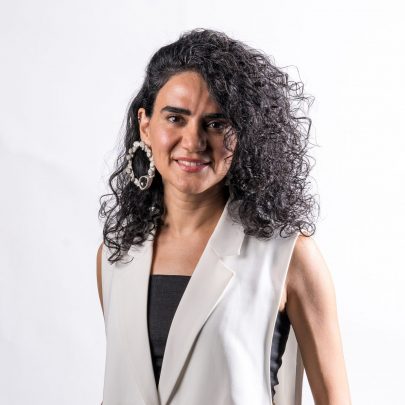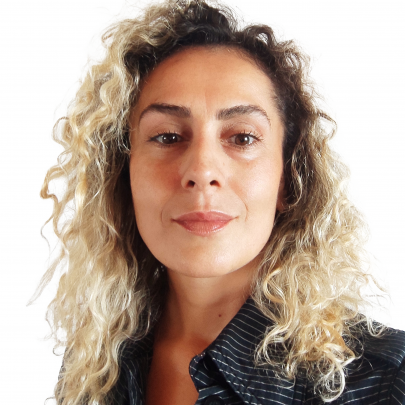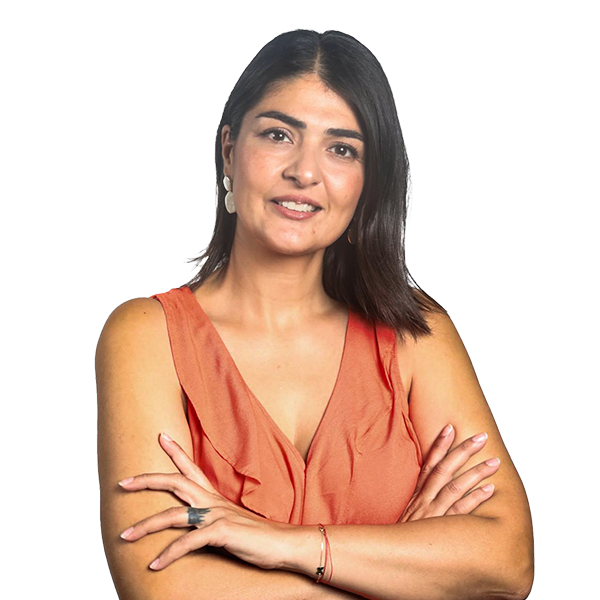Textile and Fashion Design
The ARUCAD Department of Textile and Fashion Design trains designers who can design fabric and surfaces of fabric, which comprise the essential elements of garments and accessories that we use in every moment of our lives, as well as which complement our appearance with accompanying accessories. They possess the skills to solve the technical stages involved in the fashion design process, understand the concept, collection, and styling relationship, and have the ability to create, design, and analyse garments and accessories.
About
Vision
The vision of the department is to train fashion and textile designers, particularly requiredin our region, who have the capability to generate and bring design ideas to life and to facilitate the students in exploring trends and dynamics of the market, to create brandsand develop creative product analyses, to provide a broad perspective encompassing contemporary patterns, sewing techniques and presentation formats, thus making them visionary in carrying out the design process, while also nurturing socially responsible fashion designers with a keen awareness of the industry’s needs and sensitivity towards professional ethics.
Career
Graduates of the Department of Textile and Fashion Design can find employment opportunities in design workshops, fashion agencies, fashion houses, all kinds of clothing companies, workshops producing clothing accessories, textile and weaving workshops, design departments, R&D departments, and individual entrepreneurship. They may also pursue postgraduate education and work as faculty members in relevant departments at universities.
Programme Type
Bachelor Degree
Duration
4 Years
Head of Department
Assoc. Prof. Dr. Elham Etemadi
- info@arucad.edu.tr
- +90 (392) 650 65 55
- ARUCAD Main Campus
Academic Staff

Assoc. Prof. Dr. Elham Etemadi
Head of Department

Prof. Dr. Asım Vehbi

Prof. Dr. Panteha Farmanesh

Asst. Prof. Dr. Esra Plümer

Asst. Prof. Dr. Suzan Tokgöz

Asst. Prof. Dr. Nazia Nawaz

Sen. Ins. Şansım Televi Boğa

Sen. Ins. Berke Uluşan
| FALL | ||||||||||
| Course No | Semester | Course Code | Course Name | Course Category | Credit | Pre-requisite | ||||
| T | P | L | C | ECTS | ||||||
| 1 | 1 | ARTS101 | History of Art I | FC | 3 | 0 | 0 | 3 | 5 | |
| 2 | 1 | ARTS121 | Basic Art I | FC | 4 | 4 | 0 | 6 | 10 | |
| 3 | 1 | TFAD 111 | Drawing Techniques in Textile | AC | 2 | 2 | 0 | 3 | 5 | |
| 4 | 1 | TFAD 121 | Basic Pattern Techniques I | AC | 1 | 2 | 0 | 2 | 3 | |
| 5 | 1 | TFAD 131 | Fabric Structures I | AC | 2 | 0 | 0 | 2 | 3 | |
| 6 | 1 | SOFL 101 | Academic English I | UC | 3 | 0 | 0 | 3 | 4 | |
| Total Credits | 19 | 30 | ||||||||
| SPRING | ||||||||||
| Course No | Semester | Course Code | Course Name | Course Category | Credit | Pre-requisite | ||||
| T | P | L | C | ECTS | ||||||
| 7 | 2 | ARTS102 | History of Art II | FC | 3 | 0 | 0 | 3 | 5 | ARTS 101 |
| 8 | 2 | ARTS122 | Basic Art II | FC | 4 | 4 | 0 | 6 | 10 | ARTS 121 |
| 9 | 2 | TFAD 142 | Machine Applications and Sewing Techniques | AC | 2 | 2 | 0 | 3 | 5 | |
| 10 | 2 | TFAD 122 | Basic Pattern Techniques II | AC | 1 | 2 | 0 | 2 | 3 | |
| 11 | 2 | TFAD 132 | Fabric Structures II | AC | 2 | 0 | 0 | 2 | 3 | |
| 12 | 2 | SOFL 102 | Academic English II | UC | 3 | 0 | 0 | 3 | 4 | |
| Total Credits | 19 | 30 | ||||||||
| FALL | ||||||||||
| Course No | Semester | Course Code | Course Name | Course Category | Credit | Pre-requisite | ||||
| T | P | L | C | ECTS | ||||||
| 13 | 3 | TFAD 211 | Introduction to Textile Design I | AC | 2 | 2 | 0 | 3 | 5 | |
| 14 | 3 | TFAD 221 | Weaving Design I | AC | 2 | 2 | 0 | 3 | 6 | |
| 15 | 3 | TFAD 231 | Computer Aided Design I | AC | 2 | 2 | 0 | 3 | 5 | |
| 16 | 3 | TFAD 241 | Advanced Sewing Techniques | AC | 2 | 2 | 0 | 3 | 5 | |
| 17 | 3 | TFAD 213 | Technical Drawing in Fashion Design I | AC | 1 | 2 | 0 | 2 | 5 | |
| 18 | 3 | AITT/HIST 201 | Atatürk’s Principles and History of Turkish Revolution I | UC | 2 | 0 | 0 | 2 | 2 | |
| 19 | 3 | TUDI/TURK 201 | Turkish Language I | UC | 2 | 0 | 0 | 2 | 2 | |
| Total Credits | 18 | 30 | ||||||||
| SPRING | ||||||||||
| Course No | Semester | Course Code | Course Name | Course Category | Credit | Pre-requisite | ||||
| T | P | L | C | ECTS | ||||||
| 20 | 4 | TFAD 202 | Textile and Fashion History | AC | 3 | 0 | 0 | 3 | 5 | |
| 21 | 4 | TFAD 212 | Introduction to Textile Design II | AC | 2 | 2 | 0 | 3 | 5 | |
| 22 | 4 | TFAD 222 | Weaving Design II | AC | 2 | 2 | 0 | 3 | 6 | |
| 23 | 4 | TFAD 232 | Computer Aided Design II | AC | 2 | 2 | 0 | 3 | 5 | |
| 24 | 4 | TFAD 214 | Technical Drawing in Fashion Design II | AC | 1 | 2 | 0 | 2 | 5 | |
| 25 | 4 | AITT/HIST 202 | Atatürk’s Principles and History of Turkish Revolution II | UC | 2 | 0 | 0 | 2 | 2 | |
| 26 | 4 | TUDI/TURK 202 | Turkish Language II | UC | 2 | 0 | 0 | 2 | 2 | |
| Total Credits | 18 | 30 | ||||||||
| FALL | ||||||||||
| Course No | Semester | Course Code | Course Name | Course Category | Credit | Pre-requisite | ||||
| T | P | L | C | ECTS | ||||||
| 27 | 5 | TFAD 351 | Concept Preparation and Presentation in Fashion Design | AC | 2 | 2 | 0 | 3 | 5 | |
| 28 | 5 | TFAD 301 | Fashion and Brand Marketing | AC | 3 | 0 | 0 | 3 | 5 | |
| 29 | 5 | TFAD 361 | Fashion Wear Design I | AC | 2 | 2 | 0 | 3 | 5 | |
| 30 | 5 | TFAD 331 | Computer Aided Design III | AC | 2 | 2 | 0 | 3 | 5 | |
| 31 | 5 | Area Elective I | AE | 3 | 5 | |||||
| 32 | 5 | Faculty Elective I | FE | 3 | 5 | |||||
| Total Credits | 18 | 30 | ||||||||
| SPRING | ||||||||||
| Course No | Semester | Course Code | Course Name | Course Category | Credit | Pre-requisite | ||||
| T | P | L | C | ECTS | ||||||
| 33 | 6 | TFAD 382 | Brand Management | AC | 3 | 0 | 0 | 3 | 5 | |
| 34 | 6 | TFAD 362 | Fashion Wear Design II | AC | 2 | 2 | 0 | 3 | 5 | |
| 35 | 6 | TFAD 332 | Computer Aided Design IV | AC | 2 | 2 | 0 | 3 | 5 | |
| 36 | 6 | Area Elective II | AE | 3 | 5 | |||||
| 37 | 6 | Area Elective III | AE | 3 | 5 | |||||
| 38 | 6 | Faculty Elective II | FE | 3 | 5 | |||||
| Total Credits | 18 | 30 | ||||||||
| FALL | ||||||||||
| Course No | Semester | Course Code | Course Name | Course Category | Credit | Pre-requisite | ||||
| T | P | L | C | ECTS | ||||||
| 39 | 7 | PLAS 411 | Portfolio Design | AC | 2 | 2 | 0 | 3 | 5 | |
| 40 | 7 | TFAD 480 | Internship | AC | 0 | 0 | 0 | 0 | 5 | |
| 41 | 7 | Area Elective IV | AE | 3 | 5 | |||||
| 42 | 7 | Area Elective V | AE | 3 | 5 | |||||
| 43 | 7 | Faculty Elective III | FE | 3 | 5 | |||||
| 44 | 7 | University Elective I | UE | 3 | 5 | |||||
| Total Credits | 15 | 30 | ||||||||
| SPRING | ||||||||||
| 45 | 8 | TFAD 492 | Graduation Project | AC | 2 | 8 | 0 | 6 | 10 | |
| 46 | 8 | TFAD 494 | Collection Preparation | AC | 2 | 2 | 0 | 3 | 5 | |
| 47 | 8 | Area Elective VI | AE | 3 | 5 | |||||
| 48 | 8 | Faculty Elective IV | FE | 3 | 5 | |||||
| 49 | 8 | University Elective II | UE | 3 | 5 | |||||
| Total Credits | 18 | 30 | ||||||||
| Course No | Semester | Course Code and Name | Credit | ||||
| T | P | L | K | ECTS | |||
| 1. | TFAD 305 – Urban Culture and Fashion | 3 | 0 | 0 | 3 | 5 | |
| 2. | TFAD 307 – Fashion Show and Choreography | 3 | 0 | 0 | 3 | 5 | |
| 3. | TFAD 308 – Men’s Wear Design | 2 | 2 | 0 | 3 | 5 | |
| 4. | TFAD 310 – Women’s Wear Design | 2 | 2 | 0 | 3 | 5 | |
| 5. | TFAD 372 – Accessory Design | 2 | 2 | 0 | 3 | 5 | |
| 6. | TFAD 401 – Fashion and Contemporary Art Movements | 3 | 0 | 0 | 3 | 5 | |
| 7. | TFAD 403 – Costume Design | 2 | 2 | 0 | 3 | 5 | |
| 8. | TFAD 402 – Fashion Journalism | 3 | 0 | 0 | 3 | 5 | |
| 9. | TFAD 404 – Sustainability in Fashion Design | 3 | 0 | 0 | 3 | 5 | |
FIRST YEAR/FIRST SEMESTER
FIRST YEAR/SECOND SEMESTER
SECOND YEAR/THIRD SEMESTER
SECOND YEAR/FOURTH SEMESTER
THIRD YEAR/FIFHTH SEMESTER
THIRD YEAR/SIXTH SEMESTER
Lesson; The concept of accessories, which is a complementary element in fashion design and increases added value, with both technical-material, aesthetic and combination logic, shoes, bags, jewelry, etc. It aims to provide the ability to prepare collections independent of products.
FOURTH YEAR/SEVENTH SEMESTER
FOURTH YEAR/EIGHTH SEMESTER
DEPARTMENTAL ELECTIVES
Please find below recommended supplies/materials you will need for the department of study:
For Basic Pattern Techniques Course
- Mechanical Pencil 0.5 mm
- 5 mm Leeds for Mechanical Pencil
- Eraser
- Scotch 810 Magic Tape
- Paper Scissors (20 cm)
- Colored Pencils
- L- Square Ruler
- C-Thru (See Through) Ruler
- French Curve Curve Ruler
- Tracing Wheel
- Tracing (Drafting) Pattern Paper (at least 20 PCS)
- Acetat Plastic Sheet (Min. 70×50 cm)
- Permanent Marker
- Paper Pins
- Notcher
- Awl
Machine Applications and Sewing Techniques Course
- Measuring Tape
- Tailor’s Chalk or Wax
- Sewing Pins (1 pkg)
- Fabric Scissors
- Seam Ripper
- American Fabric (10 meters)
- Invsible Zipper (5 pcs)
- Buttons (10 pcs)
- Fusing (Interfacing) (1 meter)
- American Fabric (10 meters)
- Various Types of Fabrics (10 meters)
- Draping Tape
Technical Drawing in Fashion Design Course
- Transparent Template Ruler with Holder
- Tracing Paper for Technical Drawing (1 roll)
- Mechanical Pencil 0.3 mm
- Leeds for Mechanical Pencil 0.3 mm
Weaving Design Course
- Non-Stretch Warp String (Recommended: Cotton Thread, 1mm Thick) ( 200-300 meters)
- Cotton Yarn (In verious colours and thickness) (Approx. 100-150 meters)
- Wool Yarn (In various colour and thickness) (Approx. 100-150 meters)
- Various Yarns in different colours and with different thicknesses (Approx. 100-150 meters)
- Weaving Frame loom or Wooden Frame (Not smaller than A3) (Single Unit)
Textile Design Course
- Gouache or Opaque Watercolor (At least six colors)
- Brushes (At least one Round Brush, one Flat Brush and one Detail Brush)
- Watercolor Paper (200 gm)
Computer Aided Design Course
- A satisfying laptop

